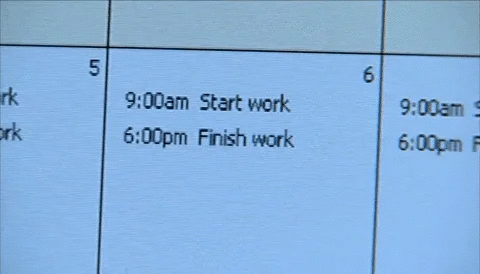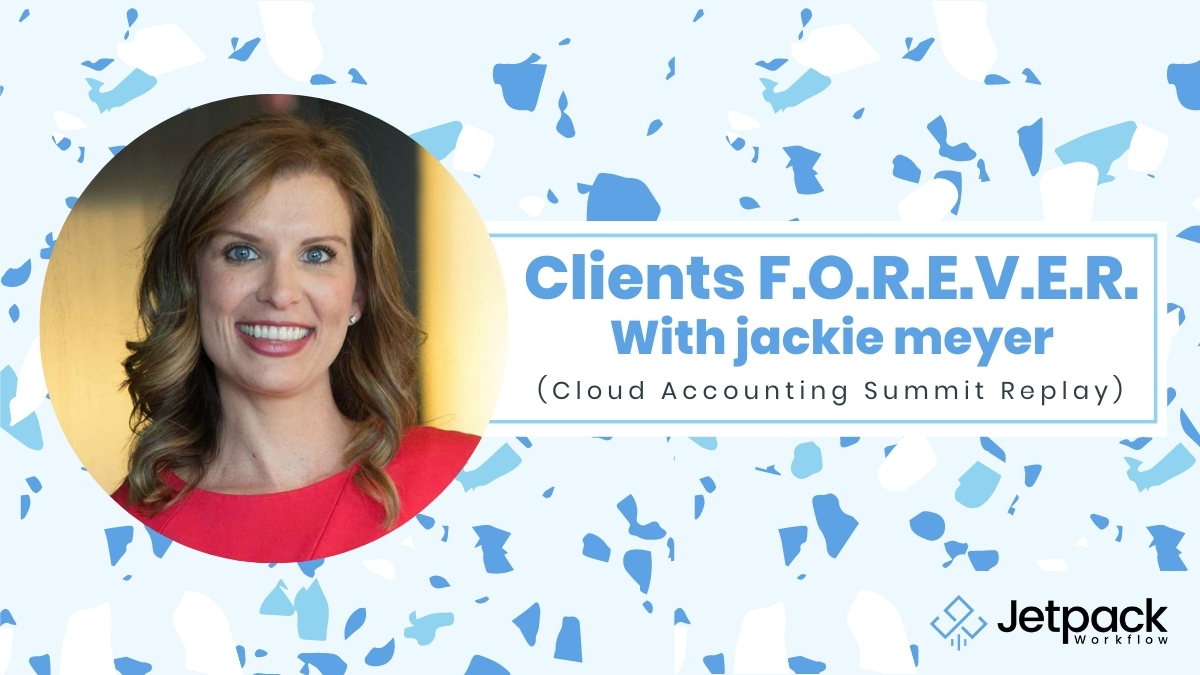[SOLOCAST] How Accountants Can Prepare for 2021

In this special end-of-year episode, David Cristello, Founder & CEO of Jetpack Workflow and host of the Growing Your Firm Podcast, offers his observations of 2020 and predictions for how best to prepare for 2021 as an accounting firm owner.
We’re proud of our community of accountants and financial professionals who have stepped up to serve businesses in need in a hectic year. You have likely had so many curveballs (and a few tornadoes of questions) sent your way, but you’ve made it through another year, stronger than before. The energy you continued to gather up for yourself and your clients has raised the level of small-to-midsize businesses worldwide.
TL;DR: We could not have made it through this year without you.
We hope you’re able to rest and take stock of all that you’ve accomplished. As you reflect on this year and prepare for the next year, we’re sharing three main buckets of your firm that you should secure for a great year in 2021. Read on to learn about each bucket you should be securing, why they’re important, and how to take action on them right away.
Podcast
Summary
- Bucket 1: Secure a margin of safety for your firm.
- Think of systems as a way to solve challenges and problems in your business.
- Bucket 2: Secure opportunities to serve existing and new clients.
- Ecommerce
- Additional Financing Options
- Bucket 3: Secure your own wellness and goals.
- Make It Easier On Yourself to Stay Focused
- Schedule Regular CEO Days
Resources
- Growing Your Firm Podcast Archives
- How to Move From Accounting Manager to CEO
- 5 Zapier-Based Automations You Can’t Live Without
- Krishna Pendyala on How to Avoid Burnout
Bucket 1: Establish a margin of safety for your firm.
Do you have enough cash on hand to weather a 30-40% drop in your business? Can you establish a line of credit just in case? Consider what finances your firm needs to stay afloat and to keep growing.
Think of systems as a way to solve challenges and problems in your business.
Is there a system, tool, or process that can help you maximize what you currently have? If you’re not already using Jetpack Workflow, you can try it for free for 14 days to automate more and reduce your firm’s overhead costs.
Leverage your time and attention away from adding headcount in your business.
Bucket 2: Seek opportunities to meet the needs of businesses everywhere.
You’ve already been taking on new clients to adjust with the times this year. Here are a couple of areas in which many businesses we anticipate will keep needing you in 2021:
Ecommerce
Ecommerce is bigger than ever before thanks to 2020. If these businesses shift into brick-and-mortar or in-person products and services as the world opens back up, they’ll need your firm’s assistance to shift into the right direction and maintain their growth.
Additional Financing Options
PPP loans. Stimulus packages. Small businesses loans. Tax planning (multiple times). Debt relief.
If you heard about it this year, you likely helped a plethora of clients with all of them. Even if 2021 opens back up early on, businesses will still be feeling the pains of 2020 and will want your advice on how to repair any damage and prepare for the possibilities of any more.
Bucket 3: Take care of yourself.
Head’s Up: We might have to be just as nimble in 2021 as we were in 2020.
We’re hoping for the best, and we have a lot of reasons to believe the world will gradually start to look more “normal” like pre-COVID times in the market. But we can’t be sure, and it’s always wise to remain flexible with your plans so you can adjust as you need. Here are our top tips for how to make a plan that works, but that is flexible enough to change as needed.
Make It Easier On Yourself to Stay Focused
If this year taught us nothing else, it taught us to fill our own cup so we can overflow to our employees, colleagues, clients, and loved ones.
How can you cut out the noise to focus on what matters in your business? One way is to reduce or remove the amount of social media, overwhelming amounts of news, etc. that you regularly consume. Stick to the sources of news you trust and need, and the communication channels that are growing your business and filling you up personally and/or professionally.
Pro Tip: If you find that you really miss the news sources and platforms you cut out, you can always return to them. There are no rules except what you establish for yourself to focus on what you want in your firm and in your life.
Schedule Regular CEO Days
We suggest that you schedule time for yourself. You can schedule a CEO Day for yourself once every 4, 6, or 8 weeks (but be smart during busy seasons not to overdo it). On this CEO Day, you can take one day to recharge, think about your business, your blockers and opportunities.
Here are the focuses we recommend for your CEO Day:
Strategize and Plan
This isn’t a PTO day, but it’s not a typical work day either. It’s a day where you get to wear only your CEO hat. Put down your admin, manager, or individual contributor hats. All of those needs can wait for one day while you focus on your business’s strategic goals, your plan to achieve each one, and the opportunities to shift any goals or focus according to the market and times.
Learn and Grow
Catch up on the industry news, research, reading, and education you need to grow as a leader. These resources can help you to reflect on your progress and your own professional goals. How are you doing against your own KPIs as a firm owner, accountant, manager (of yourself if you’re a solopreneur, or of your employees if you have a staff), and in service to your clients?
Example CEO Day Schedule
Ideally, you’ll take one whole day for this work, but if that’s too much for your current workload, start with one morning. Mark it on your calendar and make it clear for your staff and clients to know that this is the time you have dedicated to making your business and services better for everyone involved.
Here’s an example of a short morning schedule you can try out until you have more time to spend for the whole day. If you usually start your day at 7 a.m., here’s how you can spend it for your CEO Day, abridged version:
- 7 a.m. Pick up your favorite drink from your local coffee shop. Come back to your office to read for an hour. Jot down notes, and think about big questions.
- 8 a.m. Move your body in the way that you enjoy most. For David, it’s jogging around his neighborhood. If weather permits, get some fresh air and any sunshine you can find. Or keep up your streak on the virtual workout classes you’ve been mastering in 2020. Use this time to let your mind process these big questions, whether consciously or unconsciously.
- 9 a.m. Map out your priorities for the following month.
In fact, this could be your morning schedule as often as you’d like! But if you can only afford these few hours to yourself once every month or so, make sure that you stick to it as you would a meeting with your team or your clients.
May 2021 be your best year yet!
If you’ve been enjoying our Growing Your Firm Podcast, please rate our show and leave us a review. These ratings and reviews help more accounting firm owners like you to find our show. It only takes a minute, and we’d really appreciate it!
Unfamiliar with how to rate and review? Here’s a handy how-to video for Apple Podcasts, made by one of our favorite guests, Michelle Weinstein.























